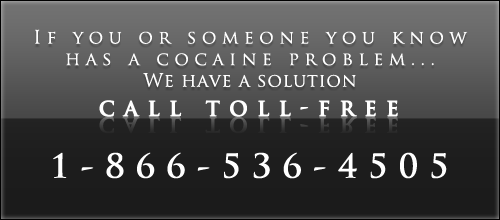Navigate
- International Drug Statistics
- Marijuana Statistics
- Nicotine Statistics
- Prescription Drug Abuse Statistics
- Statistics on Drug Abuse in America
- Statistics on Teen Drug Use
- Steroid Statistics
- Alcohol Statistics
- Cocaine Statistics
- College Drug Use Statistics
- Crack Statistics
- Drug Related Death Statistics
- Drug Trafficking Statistics
- Drug Statistics
- Drunk Driving Statistics
- Ecstasy Statistics
- Heroin Statistics
- Inhalant Statistics

Drug Trafficking Statistics

Overview of Drug Trafficking Organizations:
Drug trafficking statistics show that Mexican drug trafficking organizations (DTOs) are the most pervasive organizational threat to the United States. They are active in every region of the country and dominate the illicit drug trade in every area except the Northeast. Mexican DTOs are expanding their operations in the Northeast and have developed cooperative relationships with DTOs in that area in order to gain a larger share of the northeastern drug market. Canada-based Asian DTOs have emerged as significant transporters and distributors of high-potency marijuana and MDMA to markets throughout the United States. These DTOs also are expanding their existing indoor cannabis cultivation operations in the Pacific and Southwest Regions and have begun establishing indoor cannabis cultivation sites in the New England and West Central Regions. Colombian DTOs are dominant cocaine and heroin traffickers, particularly in the Northeast; however, they are increasingly relinquishing control to Mexican DTOs in order to shield themselves from law enforcement detection. Dominican DTOs are major transporters and distributors of cocaine and South American heroin in Florida and the Northeast, where they have developed working relationships with Puerto Rican, Colombian, and Mexican DTOs. Cuban DTOs are increasingly producing high-potency marijuana at indoor cannabis grow sites in Florida and other southeastern states. Jamaican DTOs also are prominent marijuana traffickers in the areas where they operate; in addition, they distribute cocaine in New York and Florida. Numerous other DTOs and criminal groups are active in the United States, although in most cases their influence and control are limited to particular regions. (See Table 18 for an extensive list of drug trafficking organizations and criminal groups active in each region of the country.)
Drug Trafficking Statistics
* Mexican DTOs control the transportation and wholesale distribution of most illicit drugs in every area of the country except the Northeast; their influence is increasing.
* Mexican DTOs are gaining a foothold in northeastern drug markets, where they previously had little influence.
* Asian DTOs and criminal groups based in Canada have emerged as significant producers, transporters, and distributors of high-potency marijuana and MDMA to drug markets throughout the United States.
* Colombian, Dominican, Cuban, and Jamaican DTOs serve as major transporters and distributors of illicit drugs in the United States.
Drug Trafficking Statistics: Organizations, Criminal Groups, and Gangs
Drug trafficking organizations are complex organizations with highly defined command-and-control structures that produce, transport, and/or distribute large quantities of one or more illicit drugs.
Criminal groups operating in the United States are numerous and range from small to moderately sized, loosely knit groups that distribute one or more drugs at the midlevel and retail level.
Gangs are defined by the National Alliance of Gang Investigators' Association as groups or associations of three or more persons with a common identifying sign, symbol, or name, the members of which individually or collectively engage in criminal activity that creates an atmosphere of fear and intimidation.
Drug Trafficking Statistics: Mexican DTOs control the transportation and wholesale distribution of most illicit drugs in every area of the country except the Northeast; their influence is increasing. Mexican DTOs pose the greatest organizational threat to the Florida/Caribbean, Great Lakes, Pacific, Southeast, Southwest, and West Central Regions, exerting unrivaled control over transportation and wholesale distribution of cocaine, Mexican heroin, Mexican marijuana, and ice methamphetamine. Their established overland transportation routes and entrenched distribution networks enable them to supply primary and secondary drug markets throughout these regions. Mexican DTOs are further expanding their influence throughout the country. In Florida, for instance, they have gained a greater share of the drug market by forcing African American street gangs out of midlevel drug distribution and relegating them to lower-level retail distribution. In the West Central Region, Mexican DTOs have dominated the major drug markets and are now expanding their influence and control over secondary drug markets in the region. Additionally, Mexican DTOs are expanding their ice methamphetamine distribution networks throughout the country in order to supplant diminishing supplies of domestically produced methamphetamine.
Drug Trafficking Statistics: Mexican DTOs are gaining a foothold in northeastern drug markets, where they previously had little influence. The presence of Mexican DTOs is increasing in the Mid-Atlantic, New York/New Jersey, and New England Regions. They have emerged as predominant transporters and distributors of cocaine, South American heroin, Mexican marijuana, and ice methamphetamine in the Mid-Atlantic and New York/New Jersey Regions and as significant transporters and distributors of these drugs in the New England Region. Mexican DTOs transport illicit drugs to the Mid-Atlantic Region from southwestern states and Mexico as well as from major U.S. drug distribution centers, including Atlanta, Charlotte, Chicago, and New York City. In the New York/New Jersey Region, a longtime Colombian stronghold, Mexican DTOs have established cooperative relationships with Colombian and Dominican DTOs, which have enabled them to increase their market share without attendant violence. They have become principal transporters to the region, using their established overland transportation networks, and have increased their involvement in distribution activities as well, acting as wholesale distributors of cocaine, heroin, and marijuana to other DTOs and criminal groups in the region. Mexican DTOs also are expanding into New England. Traditionally, Mexican DTOs transported illicit drugs to New England on consignment for Colombian and Dominican DTOs. However, Mexican traffickers are beginning to bypass Colombian and Dominican DTOs and are increasingly transporting and distributing cocaine, marijuana, heroin, and limited quantities of ice methamphetamine in New England on their own behalf.
Drug Trafficking Statistics: Asian DTOs and criminal groups based in Canada have emerged as significant producers, transporters, and distributors of high-potency marijuana and MDMA to drug markets throughout the United States. Canada-based Asian DTOs, primarily Vietnamese, grow and supply high-potency marijuana and produce MDMA to distribute in drug markets in Asia as well as the United States. In some regions of the United States, they are the primary suppliers of these drugs. Asian DTOs are the principal MDMA traffickers in the Mid-Atlantic, Pacific, Southeast, and West Central Regions and the principal high-potency marijuana traffickers in the Mid-Atlantic, New England, and West Central Regions. Over the past several years, Asian DTOs have significantly increased MDMA production in Canada. Much of this MDMA is smuggled across the U.S.-Canada border by couriers in private vehicles for distribution in U.S. markets. Asian DTOs are dominant producers of high-potency Canadian marijuana. According to law enforcement reporting, they smuggle a large portion of the marijuana that they produce in Canada across the U.S.-Canada border in private vehicles and commercial trucks for distribution in the United States. Additionally, some Asian DTOs appear to be shifting some of their cannabis cultivation operations from Canada into the New England and West Central Regions, most likely to avoid losing large marijuana loads at the U.S.-Canada border as a result of heightened law enforcement scrutiny and to increase profit margins by avoiding cross-border transportation costs. In the Pacific and Southwest Regions, Asian DTOs are producing high-potency marijuana at large-scale indoor grow sites; during 2006 they increased their cannabis cultivation operations.
Drug Trafficking Statistics: Colombian, Dominican, Cuban, and Jamaican DTOs serve as major transporters and distributors of illicit drugs in the United States. Colombian DTOs control the highest levels of cocaine and South American heroin trafficking in the Northeast and Florida; they also maintain bases of operation in other large drug markets, including Atlanta, Chicago, and Houston. In Chicago, New York City, and the Southwest Region, Colombian DTOs are increasingly relinquishing control of drug transportation and wholesale distribution to Mexican DTOs in order to insulate themselves from law enforcement interdiction. This arrangement has enabled Mexican DTOs to gain a larger share of the drug markets in these areas. Dominican DTOs transport and distribute cocaine and South American heroin, primarily in the Northeast and Florida. They have developed cooperative relationships with Colombian and, in some cases, Mexican DTOs in their areas of operation. Dominican DTOs in Florida also work very closely with Puerto Rican DTOs. Cuban DTOs are increasingly producing and distributing hydroponic marijuana in Florida and other southeastern states. These DTOs are cultivating high-potency marijuana in sophisticated indoor grow sites and then distributing the drug to markets as far away as New York City. Jamaican DTOs are prominent marijuana transporters and distributors in the New York/New Jersey and Florida/Caribbean Regions. Much of this marijuana is cultivated by Jamaican DTOs in Caribbean island nations. Jamaican DTOs also transport and distribute cocaine, primarily in Florida. Street gangs are prominent retail distributors of most illicit drugs, particularly crack, in every region of the country; in many regions they are the primary retail distributors. OMGs are actively involved in the distribution of illicit drugs, particularly cocaine, marijuana, and methamphetamine, in all regions of the United States. (See Table 18.)
Table 18. Drug Trafficking Organizations or Criminal Groups Operating in the United States
Region Cocaine Methamphetamine Heroin Marijuana MDMA
Florida/Caribbean African American
Bahamian
Caribbean-based
Caucasian
Colombian
Cuban
Dominican
European
Guatemalan
Haitian
Honduran
Jamaican
Mexican
Nicaraguan
Panamanian
Puerto Rican
Salvadoran
Venezuelan
Street gangs Caucasian
Mexican
OMGs* African American
Caucasian
Colombian
Cuban
Dominican
Guatemalan
Honduran
Nicaraguan
Panamanian
Puerto Rican
Salvadoran
Venezuelan
Street gangs African American
Caucasian
Colombian
Cuban
Haitian
Honduran
Jamaican
Mexican
Nicaraguan
Panamanian
Salvadoran
Street gangs African American
Asian
Caucasian
Colombian
Cuban
Dominican
Israeli
Street gangs
Great Lakes African American
Colombian
Mexican
Street gangs Asian
Mexican
OMGs* African American
Colombian
Mexican
Nigerian African American
Asian
Caucasian
Mexican
Middle Eastern African American
Asian
Caucasian
Mid-Atlantic African American
Caucasian
Colombian
Dominican
Mexican
Puerto Rican
Street gangs Caucasian
Hispanic
Mexican
OMGs* African American
Asian
Caucasian
Colombian
Dominican
Mexican
Puerto Rican
West African African American
Asian
Caucasian
Colombian
Cuban
Dominican
Mexican
Puerto Rican Asian
Caucasian
Dominican
Israeli
New England African American
Cambodian
Caucasian
Colombian
Dominican
Guatemalan
Haitian
Honduran
Jamaican
Laotian
Mexican
Nicaraguan
Panamanian
Puerto Rican
Salvadoran
Thai
Vietnamese
OMGs*
Street gangs Cambodian
Caucasian
Chinese
Laotian
Mexican
Puerto Rican
Vietnamese
OMGs*
Street gangs Cambodian
Caucasian
Chinese
Colombian
Dominican
Guatemalan
Haitian
Honduran
Laotian
Mexican
Nicaraguan
Panamanian
Puerto Rican
Salvadoran
Vietnamese
OMGs* African American
Cambodian
Caucasian
Chinese
Colombian
Dominican
Guatemalan
Haitian
Honduran
Jamaican
Laotian
Mexican
Nicaraguan
Panamanian
Puerto Rican
Salvadoran
Vietnamese Cambodian
Caucasian
Chinese
Laotian
Vietnamese
OMGs*
New York/New Jersey African American
Caucasian
Colombian
Dominican
Jamaican
Mexican
Puerto Rican
Street gangs Caucasian
Filipino
Mexican African American
Asian
Caucasian
Colombian
Dominican
Mexican
Nigerian
Pakistani
Puerto Rican
West African
Street gangs African American
Asian
Caucasian
Colombian
Dominican
Jamaican
Mexican
Street gangs Caucasian
Colombian
Dominican
Jamaican
Mexican
Vietnamese
Street gangs
Pacific African American
Caucasian
Mexican
Samoan
Tongan
Vietnamese
OMGs*
Street gangs African American
Caucasian
Mexican
OMGs*
Street gangs African American
Caucasian
Mexican
OMGs*
Street gangs African American
Caucasian
Indonesian
Malaysian
Mexican
Vietnamese
Street gangs African American
Caucasian
Indonesian
Malaysian
Mexican
Vietnamese
OMGs*
Southeast African American
Mexican
Street gangs African American
Asian
Caucasian
Hispanic
Mexican
OMGs* African American
Caucasian
Mexican
Street gangs African American
Asian
Caucasian
Cuban
Mexican Mexican
Vietnamese
Southwest African American
Colombian
Mexican
Street gangs Asian
Mexican
OMGs* Colombian
Mexican Asian
Caucasian
Jamaican
Mexican Asian
West Central Caucasian
Hispanic
Mexican
Street gangs Caucasian
Hispanic
Mexican
Native American
OMGs*
Street gangs Asian
Caucasian
Hispanic
Mexican
Street gangs African American
Caucasian
Hispanic
Mexican
Vietnamese
OMGs*
Street gangs Asian
Caucasian
Vietnamese
Street gangs
* OMGs-outlaw motorcycle gangs
